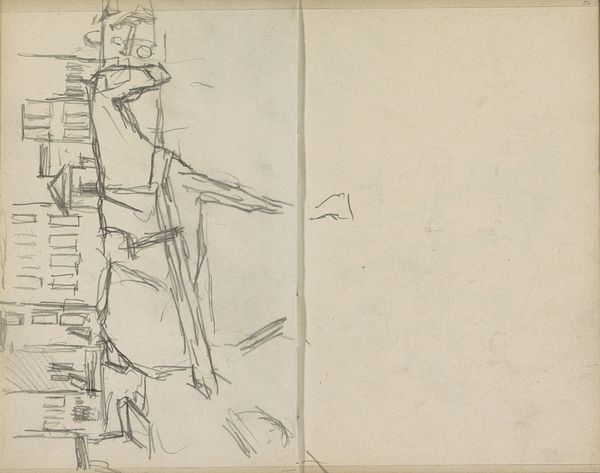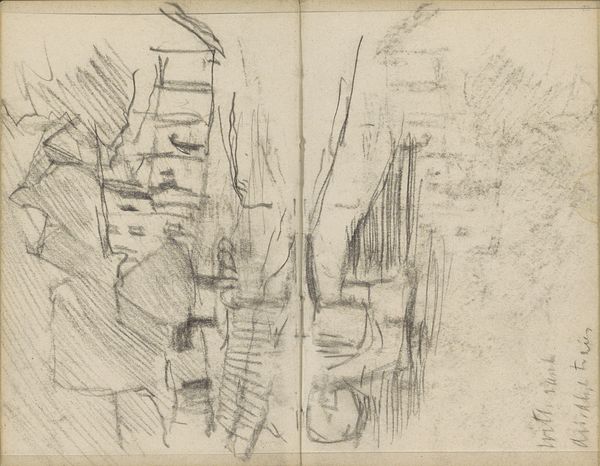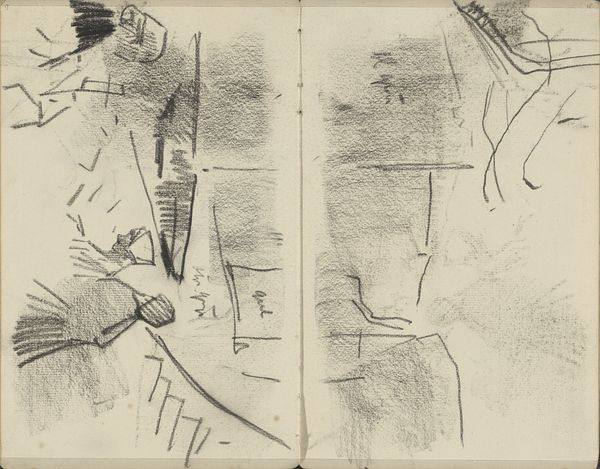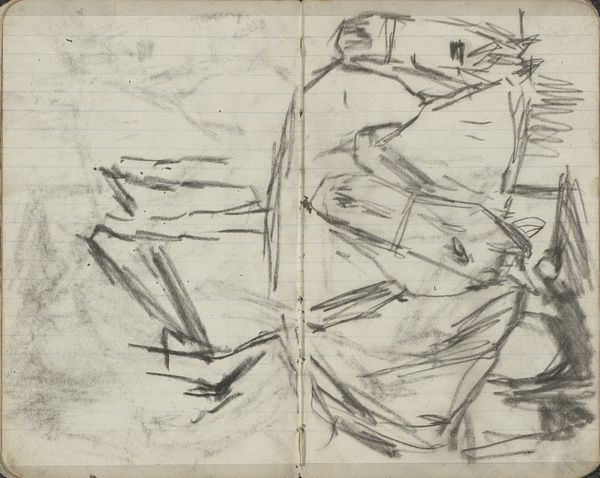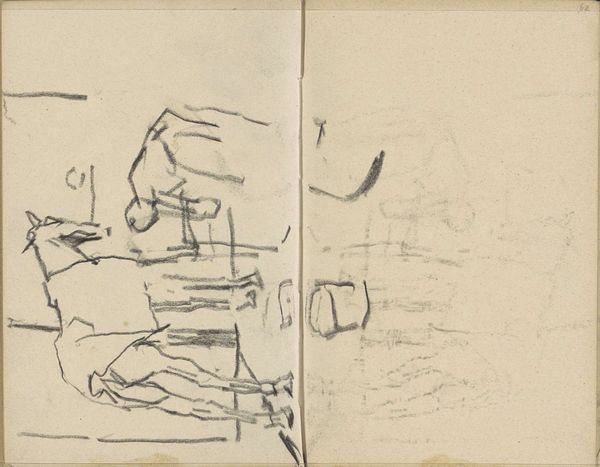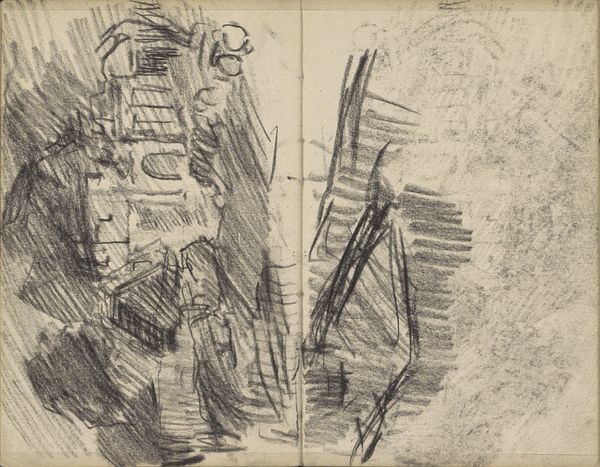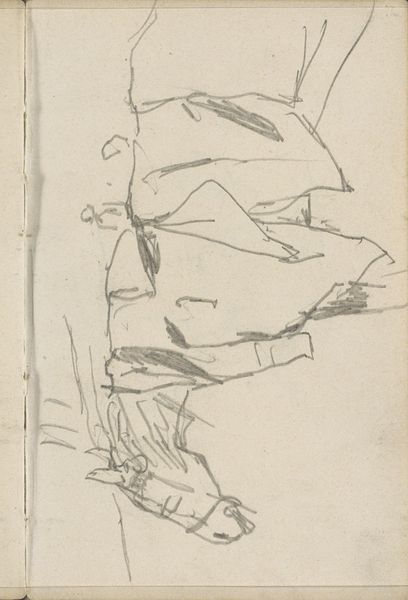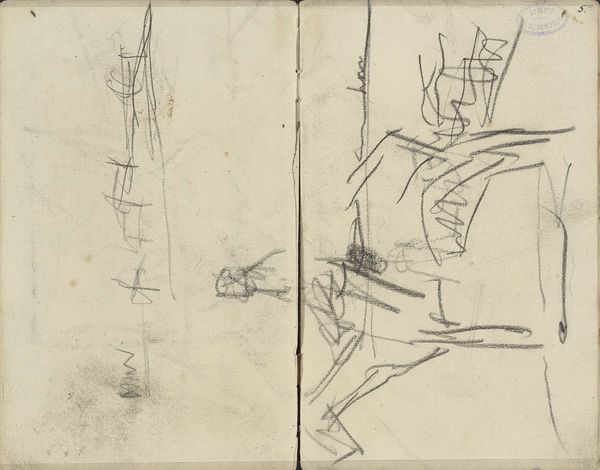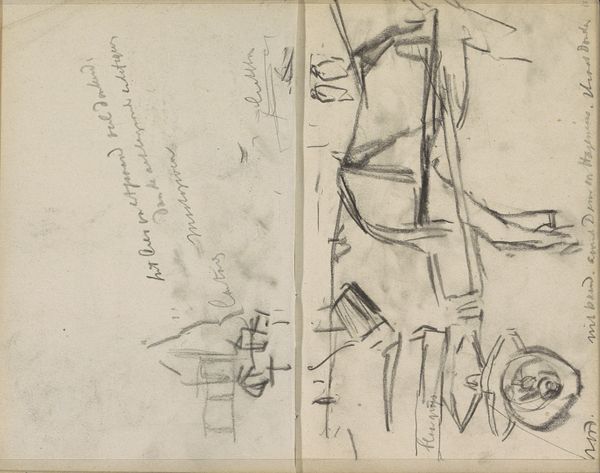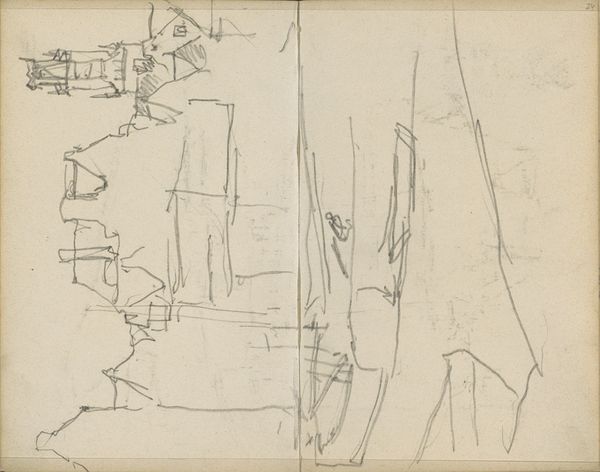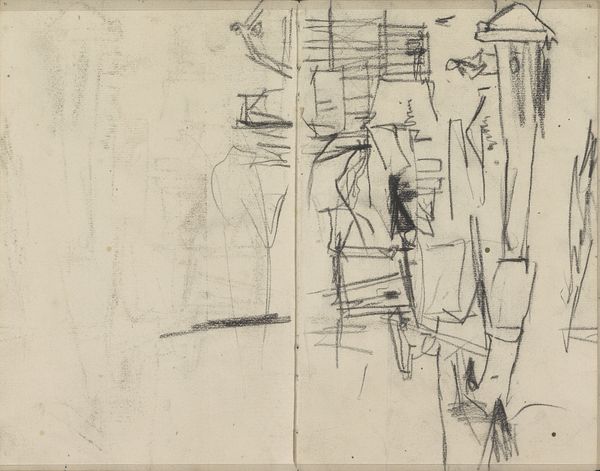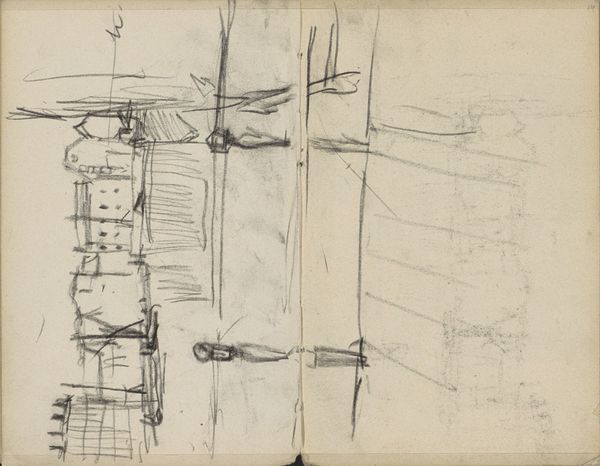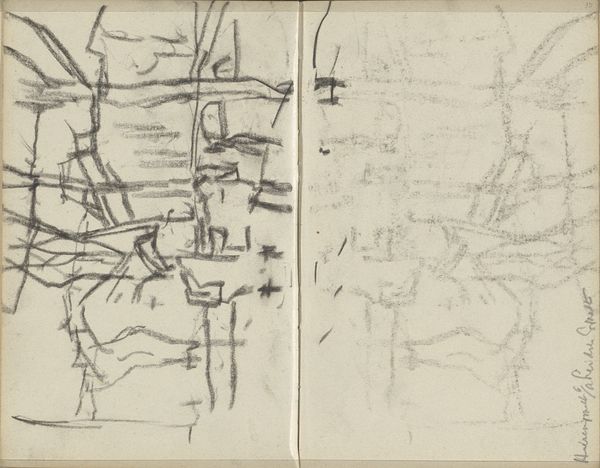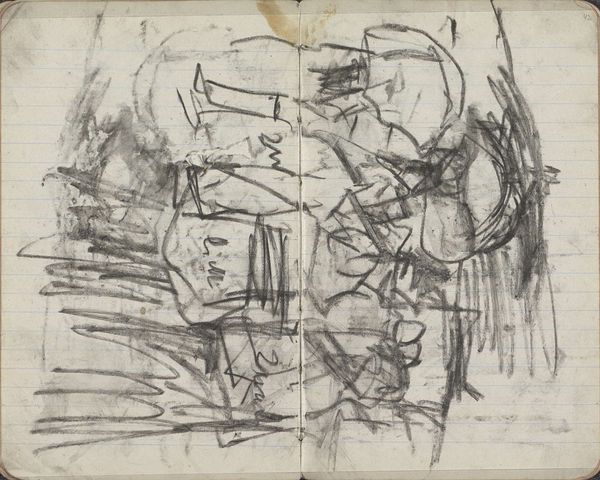
Aangespannen paarden, mogelijk op de Dam in Amsterdam 1912 - 1919
0:00
0:00
Copyright: Rijks Museum: Open Domain
Editor: Here we have "Aangespannen paarden, mogelijk op de Dam in Amsterdam," a pencil drawing by George Hendrik Breitner, sometime between 1912 and 1919. It feels like just a quick impression, a fleeting moment captured in a few strokes. What strikes you about this piece? Curator: Well, consider the social and historical context. Breitner was known as the 'painter of the people'. This sketch, likely made 'en plein air', shows us working horses, maybe for transportation of goods, on what looks to be a busy Dam Square in Amsterdam. We need to examine the intersections of class, labor, and urban life at that time. How does the rough, unfinished nature of the sketch contribute to that narrative, do you think? Editor: I guess it highlights the everydayness of the scene? These aren’t idealized horses, they're workers in a rapidly modernizing city. So, how does that relate to broader artistic movements? Curator: It aligns with the shift in Impressionism and Post-Impressionism towards depicting the realities of modern life. Artists began questioning academic traditions, and wanted to capture raw, unedited experiences. The pencil medium makes it extremely raw and immediate. Breitner here seems to acknowledge that tension, representing progress through the horses labor while possibly critiquing the costs of urbanization. Does viewing the work this way influence your initial feeling about it? Editor: Definitely. I saw it as just a quick sketch before, but understanding the context gives it a completely new weight. I hadn't really considered the connection between the subject matter and artistic style before. Curator: Precisely! Art always exists in conversation with its time. Bringing that to the forefront makes the artwork that much more dynamic. Editor: Thank you, I'll certainly carry that with me. Curator: My pleasure. Understanding the historical conversation gives depth to both the artwork and to our own perspective.
Comments
No comments
Be the first to comment and join the conversation on the ultimate creative platform.
